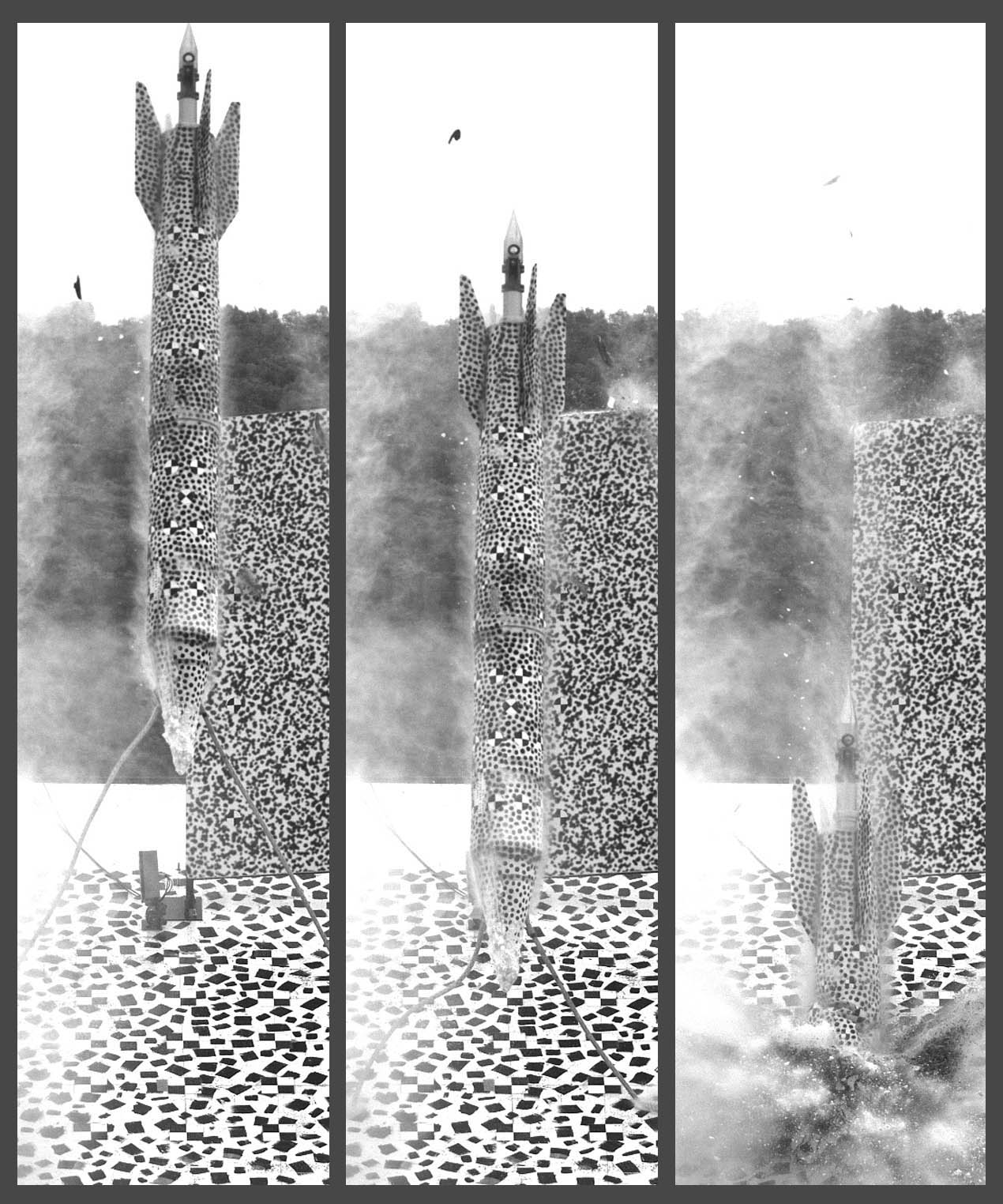ALBUQUERQUE, N.M. — A ground-penetrating bomb, minus its nuclear components, rammed through a target at the remote Coyote Canyon test range last month in Sandia National Laboratories’ first such rocket-driven impact test in seven years. Engineers said the Sandia components on the weapon performed as expected.
“Really nice work,” said Engineering Sciences Director Justine Johannes, who watched the test at the aerial cable facility on a video monitor with about a dozen others who had worked toward the Nov. 20 test for years.

The Sandia team hoisted the test B61-11, an earth-penetrating weapon, high above the target on a device attached to a rocket sled capable of thousands of pounds of thrust. The motors were lit and the rocket pulled the B61 down into the target.
The test weapon was fitted with instruments to evaluate system performance as it slammed into the target. Senior manager Patrick Sena said the preliminary data showed the test met the requirements of the worst-case conditions the B61 is expected to meet with high reliability. The weapon also was cooled to an internal and external temperature far below 0 degrees Fahrenheit for the test. It had to be de-iced twice before the test as falling rain froze on the casing.
“One of the main purposes of the stockpile is deterrence, so one important way to assure deterrence is to have a successful surveillance test that shows our systems work,” Sena said.
Sandia’s annual surveillance program for each weapon type consists of flight tests, lab tests and component and material tests.
Flight tests, the most realistic, subject the test unit to shock, vibration, temperature, rotation, weather and so on. “Data from flight tests is precious because it is from a single shot device,” Sena said. Sandia had worked toward the test since March 2010, the end of a hiatus on such testing that was prompted by an October 2008 accident at Sandia’s separate 10,000-foot rocket sled track. In the last three years, Sandia rebuilt its ability to run the tests, including reconstructing the firing set system at the aerial cable facility, acquiring new rocket motors and putting a strong emphasis on safety surrounding the test. In addition, it rebuilt a team. Dennis Miller, senior manager for Validation and Qualification, said nearly all the technicians who set up the test had never participated in one before.
Sandia tests units pulled at random from stockpile
Sandia pulls random units from the stockpile for tests. Units also are dropped from aircraft at the Tonopah Test Range in Nevada for flight tests.
The nuclear package, removed prior to the tests, is studied separately by the design laboratory, either Los Alamos or Lawrence Livermore national laboratory.
Lab surveillance tests study the nonnuclear components under different conditions. Environments are more controlled so engineers can closely measure how components function. Other laboratory tests examine components and materials for signs of aging by repeatedly subjecting them to a wide range of conditions.
As flight test preparations moved forward Nov. 20, a radio on a table in the room crackled with updates: the explosives were wired; the test team pulled back to a control facility 5,000 feet away to arm the firing system remotely; the final countdown of 5-4-3-2-1 began. A camera that had been focused on the weapon panned down to the target at T minus 30 seconds to capture the B61 slamming through the concrete.
An unimaginable amount of detail and work goes into getting as much information as possible out of the tests. This test involved a series of calibration tests and qualifying reviews beforehand, along with dozens of people from Sandia, as well as researchers from Los Alamos who fielded components on the weapon and personnel who helped set up and monitor the test.
After the test, the radio continued to snap out updates: no fires — a possibility from burning rocket fuel debris; no debris from the weapon around the target; levels of toxic gas from the burning rocket propellant at zero; in short, everything at the scene indicated the test was safe.
“Boring is good,” commented Johannes.
The area was declared safe about 15 minutes after the test, and technicians began moving cables and cleaning up the site. Later, two large cranes moved the target so technicians could excavate the B61 in preparation for disassembly at the Pantex Plant in Amarillo, Texas, where it was built. Data from the test will be used to update the annual assessment of the nation’s stockpile for President Barack Obama.